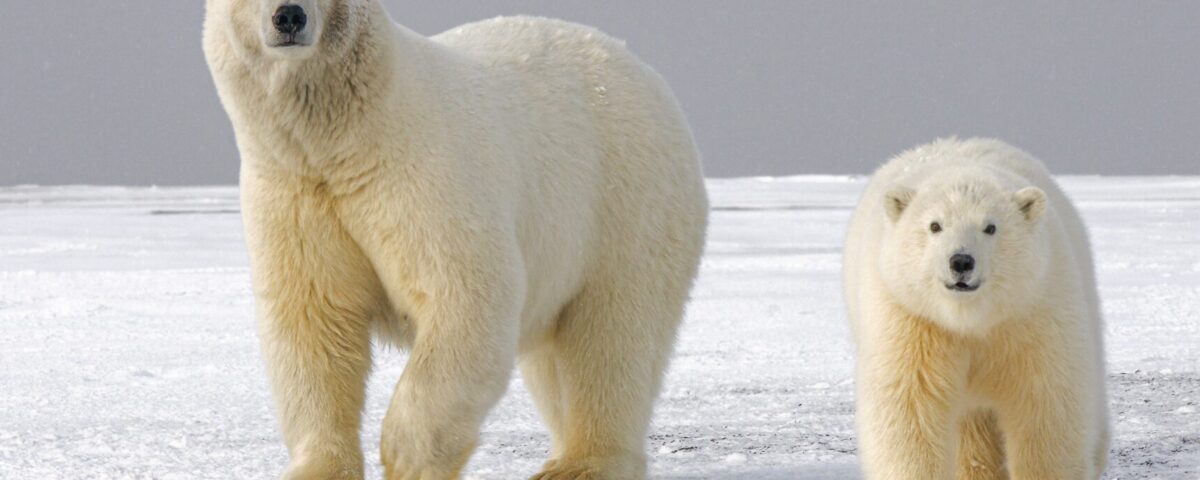
What “Where the Crawdads Sing” Can Teach Us About Wetland Appreciation
February 2, 2023
Great Ecology Welcomes Rachel & Patrick!
March 14, 2023
Polar Bear Awareness
Author: Liz Clift
Today is International Polar Bear Day—and polar bears (Ursus maritimus) have gotten a lot of climate change coverage—in no small part because the effects of climate change have been especially pronounced in the Arctic. There are 19 polar bear subpopulations, broken into four ecoregions based on the annual pattern of sea ice loss and gain (it increases again over winter). Unfortunately, for these bears sea ice has been decreasing overall since the late-1980s, both in extent and volume.
Polar bears rely on sea ice for traveling, hunting, mating, and resting—but as the amount of Arctic ice decreases, these bears—and their prey that hauls out on the ice—have to travel further distances overland or by swimming. Polar bears get the bulk of their calories for the year during late spring and early summer, when their prey is abundant. However, due to climate change, sea ice is retreating earlier and forming later, which gives the bears less time to hunt—and causing them to have to travel further to find a meal or even a place to rest.
This can lead to starving conditions for polar bears, reduce the likelihood that cubs survive until spring, and result in smaller adults among the cubs that do survive. In addition, the bears are forced to become more reliant on other types of food, including carcasses of marine mammals, duck eggs, reindeer—and even garbage dumps. The last of these may lead to more human-bear “conflict.”
Polar bears are an apex predator, which means they play a vital role in balancing the health of Arctic ecosystems, and in particular helping keep populations of other Arctic marine mammals in check. Disrupting that balance could have cascading effects on the ecosystem.
Although polar bears are not currently classified as endangered, the ongoing threats to their habitat does make them vulnerable. While it may feel difficult, as an individual to do anything to support these bears, you can make efforts to help them in a variety of ways—including:
- Donating money toward polar bear research and advocacy;
- Voting with your dollar to reduce or offset greenhouse gas emissions, including eating local foods, driving less, or choosing transportation that doesn’t rely on an internal combustion engine;
- Working to protect Arctic cod fisheries (Boreogadus saida), which provide a primary food source for ringed seals (Pusa hispida), the preferred food of polar bears;
- Advocating for policies at your local government that help reduce greenhouse gas emissions; and
- Choose to vote with the climate in mind, in each election.

